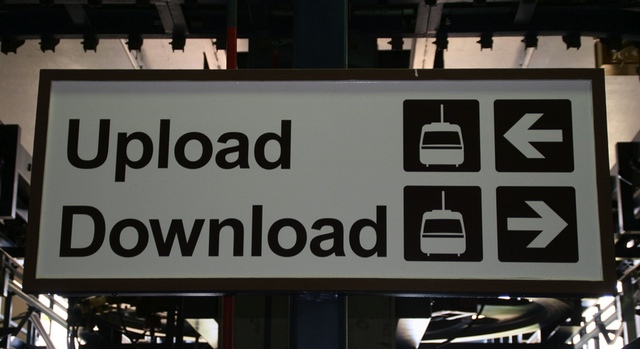Before we knew anything about the PS4 and Xbox One, our imaginations ran wild. When they were just ideas, the next-gen consoles held unlimited possibilities for every gamer. Of course, all of those hopes came crashing down when the infinite possibilities collapsed down into two actual real-life products. The PS4 won’t be shipping with a camera, we’re missing out on some really cool controller technology, and Microsoft bungled the move to an all-digital world. The PS4 and Xbox One could have been a huge leap forward, but instead we’re stuck with baby steps.
PS4 camera
When Sony announced that the PS4 will only cost $400, the crowd at E3 went wild. It drastically undercut the Xbox One’s $500 price tag, and set the internet ablaze with warm feelings towards Sony. Unfortunately, with a price that low, the camera won’t come bundled with the console itself. It’s an optional accessory that costs $59.99 on its own, and effectively splits the userbase. No matter how many PS4s Sony is able to sell, the accessory will never reach marketshare parity. Sadly, that leaves hopeful developers holding the bag.

Game makers hoping to reach the widest possible audience are now effectively being discouraged from developing camera-based games on the PS4. Why take the financial risks of developing a whole game that you can only sell to a fraction of the total audience? Unsurprisingly, we saw similar problems with the last generation. The Kinect and PlayStation Move were sold separately, and that lead to a dearth of high-quality titles designed with motion controls in mind. The Xbox One already has an early lead in the motion control race with the promise of games like Fantasia, and the PS4 has little chance of catching up at this point.
Stress-sensing controllers
 In the early days of the PS4′s development, Sony’s Mark Cerny was interested in implementing galvanic skin response sensors (GSR) in the DualShock 4. If players aren’t sweating enough, a game could dynamically ramp up the difficulty until the desired stress level has been reached. Combine this idea with the Kinect’s ability to monitor your heartbeat with its high-res camera, and this could be quite a compelling way to make games feel more intuitive and responsive to individual players. Regrettably, the final version of the DualShock 4 didn’t end up including GSR technology.
In the early days of the PS4′s development, Sony’s Mark Cerny was interested in implementing galvanic skin response sensors (GSR) in the DualShock 4. If players aren’t sweating enough, a game could dynamically ramp up the difficulty until the desired stress level has been reached. Combine this idea with the Kinect’s ability to monitor your heartbeat with its high-res camera, and this could be quite a compelling way to make games feel more intuitive and responsive to individual players. Regrettably, the final version of the DualShock 4 didn’t end up including GSR technology.
Even though Sony isn’t bothering with GSR at the launch of the PS4, we’re already seeing the competition jump on the possibilities. Earlier this year, reports started to surface that Valve is toying with the idea of sweat-measuring devices. Sony is undoubtedly playing it safe this time around, but maybe Valve can pick up some of the slack.
All digital, all the time
Microsoft received a lot of backlash for its overly demanding DRM restrictions with the Xbox One. From the get-go, consumers hated the 24-hour check-in and rejection of the traditional rental and used games business models. After facing non-stop complaining for months, Microsoft finally caved after E3, and ditched the draconian DRM. The check-in requirement is gone, and disks will work like they always have. Good news, right? Well, not completely. Microsoft’s sudden about-face came at the expense of some very cool features.

In the original plan, disk-based games would be added to your digital library as soon as they’re played on your Xbox One. Even if you lost the disk, the entire game could still run off of the hard drive, and it could even be downloaded from Microsoft’s servers. In addition, Microsoft also scrapped its plans for the family sharing feature — the system that would have allowed up to ten different people to play your entire game collection. Even though consumer response kept the DRM creep at bay, we have lost some outstanding features in the process.
Microsoft poured the baby out with the bathwater, and that has left some gamers even more angry than they started. Over 25,000 have signed an online petition to ask Microsoft to deliver on the original Xbox One concept, and that leaves Microsoft in an uncomfortable situation. At this point, the Xbox team is damned if they do, and damned if they don’t. They’re going to get screamed at in internet comments no matter what.
In an interview at our sister site IGN, Microsoft’s Marc Whitten explained that not all is lost for the features left on the cutting room floor. Microsoft is clearly listening to the feedback it’s getting, and that could bode well for the return of family sharing. “If it’s something that people are really excited about and want, we’re going to make sure that we find the right way to bring it back,” says Whitten. Regardless of Microsoft’s plans, Steam is already moving in a similar direction. If Valve can pull it off without hassling consumers, Microsoft and Sony might not have any other choice but to offer game sharing sooner rather than later.
[Image credit: Vox Efx & John Trainor]
Written by: Grant Brunner, ExtremeTech
Posted by: Situated Research
